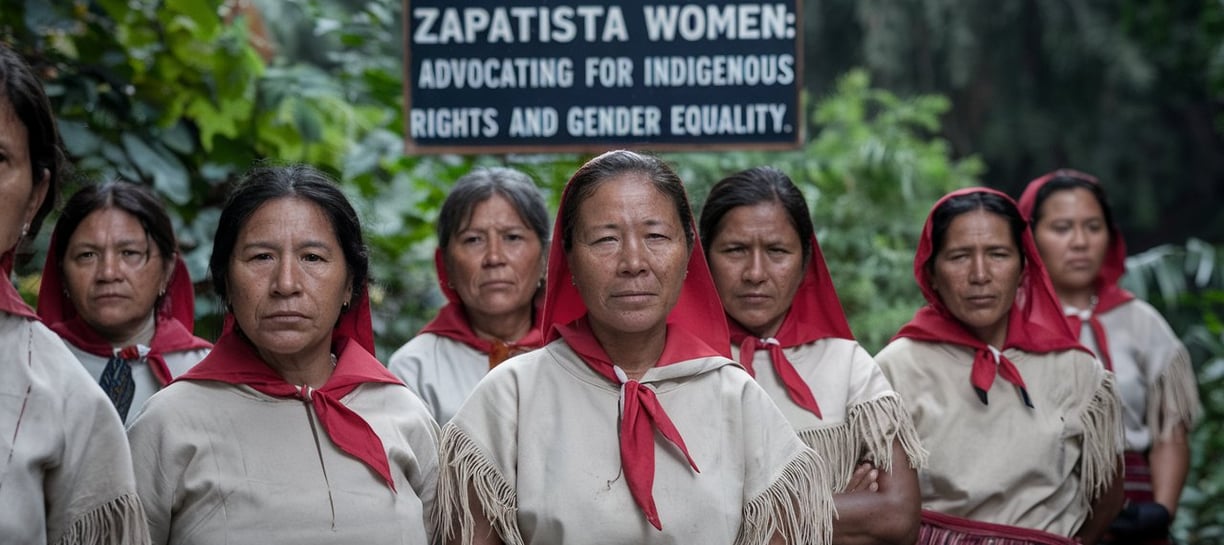The Resistance of the Zapatista Women: Advocating for Indigenous Rights and Gender Equality
8/25/20242 min read


My post content
In the mountains of southeastern Mexico, the Zapatista Army of National Liberation (EZLN) emerged in 1994 as a powerful force advocating for indigenous rights and social justice. While much attention has been paid to the Zapatista movement as a whole, the critical role of Zapatista women, both as leaders and fighters, remains a less-told story. These women have been at the forefront of the movement, fighting not only against state oppression but also for gender equality within their communities.
The Rise of the Zapatista Movement
The Zapatista movement began on January 1, 1994, the day the North American Free Trade Agreement (NAFTA) went into effect. The agreement was seen by many indigenous communities in Mexico as a death sentence for their way of life, threatening to dispossess them of their lands and further marginalize their rights. The Zapatistas, named after Emiliano Zapata, a revolutionary leader from the early 20th century, took up arms to resist these changes and to demand respect for indigenous rights.
Women's Participation in the Movement
Women played a crucial role in the Zapatista uprising from its inception. Unlike many other revolutionary movements, the Zapatistas actively promoted gender equality. In the early 1990s, the Revolutionary Women’s Law was adopted by the Zapatista communities, outlining the rights of women to participate in the struggle, choose their partners, receive education, and work for equal pay.
Women like Comandanta Ramona became symbols of the Zapatista resistance, demonstrating the movement's commitment to gender equality. Their participation was not just symbolic; women took up arms, led communities, and were integral in decision-making processes. This was a revolutionary shift in many indigenous communities, where traditional gender roles often limited women's public engagement.
Achievements and Challenges
Zapatista women have achieved significant gains in terms of gender equality and social rights. Within their autonomous communities, they have established healthcare and educational programs, often led and staffed by women. They have created cooperatives that empower women economically, allowing them to gain financial independence and assert more control over their lives.
However, the struggle has not been without its challenges. Despite formal commitments to gender equality, Zapatista women still face societal pressures and cultural norms that can limit their freedom. Additionally, the broader struggle against state oppression and economic marginalization continues to pose significant hurdles for the Zapatista communities.
The Legacy of Zapatista Women
The resistance of Zapatista women is a testament to their resilience and commitment to justice, both for their people and themselves. Their fight for indigenous rights and gender equality has inspired many and challenged the status quo in profound ways. While much remains to be done, their role in the Zapatista movement has ensured that the fight for social justice in Mexico includes a strong emphasis on gender equality.
The Zapatista women remind us that the struggle for social justice is multifaceted, encompassing not only issues of class and ethnicity but also gender. Their story is a powerful example of how marginalized groups can assert their rights and challenge oppression in all its forms.
Explore
Uncovering hidden stories from the past.
Connect
Discover
© 2024. All rights reserved. The Unseen History logo is registered trademark.
